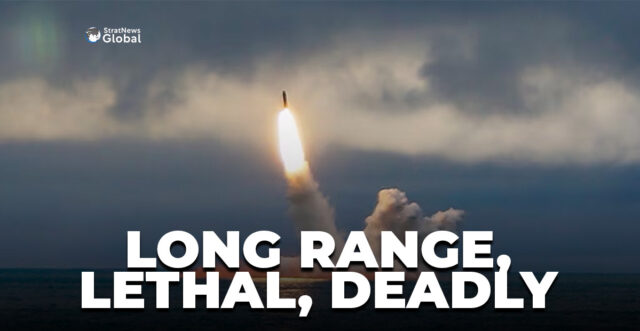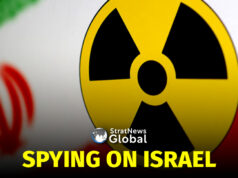Russia has officially put into service its Bulava intercontinental ballistic missile, a crucial update to its nuclear capabilities. According to state media, this move was formalised in a decree issued on May 7, coinciding with President Vladimir Putin’s commencement of a new six-year term.
The Bulava missile is submarine-launched and is a significant component of Russia’s strategy to modernise its nuclear arsenal.
The missile’s adoption was confirmed by its chief designer, Yuri Solomonov, during an announcement covered by the TASS news agency.
Solomonov, who is associated with the Moscow Institute of Thermal Engineering—a key player in Russia’s missile development, including the Topol-M and Yars missiles—stressed the importance of the Bulava in Russia’s defence strategy.
Developed from a program that began in the 1990s, the Bulava missile is designed to be equipped on Russia’s Borei-class submarines.
Recently, in November, the defence ministry reported a successful test launch of the Bulava from one of these submarines. Launched underwater in the White Sea, the missile traveled thousands of kilometres to strike a designated target on the Kamchatka peninsula.
The operational capability of the Bulava enhances the strategic reach of Russia’s Northern and Pacific fleets, which now include seven Borei-class submarines, each armed with 16 Bulava missiles.
The significance of this development is underscored by ongoing tensions with the West. President Putin has explicitly warned that NATO intervention in Ukraine could escalate to a nuclear conflict.
He has reassured, however, that while he does not see the U.S. “rushing” towards this scenario, Russia’s nuclear forces are technically prepared.
The Missile Defense Project at the Washington-based Centre for Strategic and International Studies notes that the Bulava missile can travel up to 8,300 km (approximately 5,160 miles) and is capable of carrying up to 10 multiple independently targetable re-entry vehicles (MIRVs).
These MIRVs allow it to deliver nuclear warheads to several targets simultaneously, highlighting its strategic importance in global defence architecture.
With Inputs From Reuters





